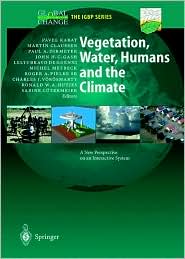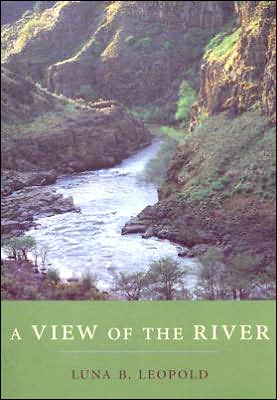Vegetation, Water, Humans and the Climate
A state-of-the-art overview of the influence of terrestrial vegetation and soils within the Earth system. The text deals especially with interactions between the terrestrial biosphere and the atmosphere via the hydrological cycle and their interlinkage with anthropogenic activities. Measurements gathered in integrated field experiments in the Sahel, the Amazon, North America and South-east Asia confirm the importance of these interactions. Observations are complemented by modelling studies,...
Search in google:
This book presents a state-of-the-art scientific overview of the influence of terrestrial vegetation and soils within the Earth system. It deals especially with interactions between the terrestrial biosphere and the atmosphere via the hydrological cycle and their interlinkage with anthropogenic activities. Measurements gathered in integrated field experiments in the Sahel, the Amazon, North America and South-east Asia confirm the importance of these interactions, but a substantial data consolidation effort still needs to be undertaken. Observations are complemented by modelling studies, including regional models that simulate flows and transport in river catchments, coupled land-cover and regional climate systems, and Earth-system and global circulation models. Water, nutrient and sediment fluxes in river basins are also discussed and are shown to be highly impacted and regulated by humans through land use, pollution and river engineering. Finally, the book discusses environmental vulnerability and methodologies for assessing the risks associated with regional and global climatic and environmental variability and change. The editors emphasise that the results reported in this book are based on the research work of many individual scientists and teams around the world associated with the objectives of the IGBP-BAHC and WCRP-GEWEX international research programmes.
Pt. ADoes land surface matter in climate and weather?5A.1Introduction7A.2The climate near the ground9A.3The regional climate21A.4The global climate33A.5The Sahelian climate59A.6The Amazonian climate79A.7The Boreal climate93A.8The Asian monsoon climate115A.9Summary, conclusion and perspective129Pt. BHow measurable is the earth system?155B.1Introduction157B.2The energy balance closure problem159B.3Radiation measurements in integrated terrestrial experiments167B.4Surface turbulent fluxes173B.5Accuracy and utility of aircraft flux measurements183B.6Boundary layer budgeting189B.7Vegetation structure, dynamics and physiology199B.8Remote sensing and land-surface experiments207B.9The water balance concept - how useful is it as a guiding principle for the design of land-atmosphere field experiments?213B.10Use of field experiments in improving the land-surface description in atmospheric models : calibration, aggregation and scaling221B.11Further insight from large-scale observational studies of land/atmosphere interactions229Pt. CThe value of land-surface data consolidation245C.1Motivation for data consolidation247C.2Existing degrees of consolidation255C.3Achieving full data consolidation267C.4Terrestrial data assimilation273C.5Conclusions289Pt. DThe integrity of river and drainage basin systems : challenges from environmental change297D.1Introduction299D.2Responses of hydrological processes to environmental change at small catchment scales301D.3River basin responses to global change and anthropogenic impacts339D.4Responses of continental aquatic systems at the global scale : new paradigms, new methods375D.5Case study 1 : integrated analysis of a humid tropical region - the Amazon Basin415D.6Case study 2 : integrated ecohydrological analysis of a temperate developed region : the Elbe River Basin in Central Europe429D.7Case study 3 : modelling the impacts of land use and climate change on hydrological responses in the mixed underdeveloped/developed Mgeni catchment, South Africa441D.8Conclusions : scaling relative responses of terrestrial aquatic systems to global changes455Pt. EHow to evaluate vulnerability in changing environmental conditions?481E.1Introduction483E.2Predictability and uncertainty485E.3Contrast between predictive and vulnerability approaches491E.4The scenario approach497E.5The vulnerability approach499E.6Case studies515E.7Conclusions537







